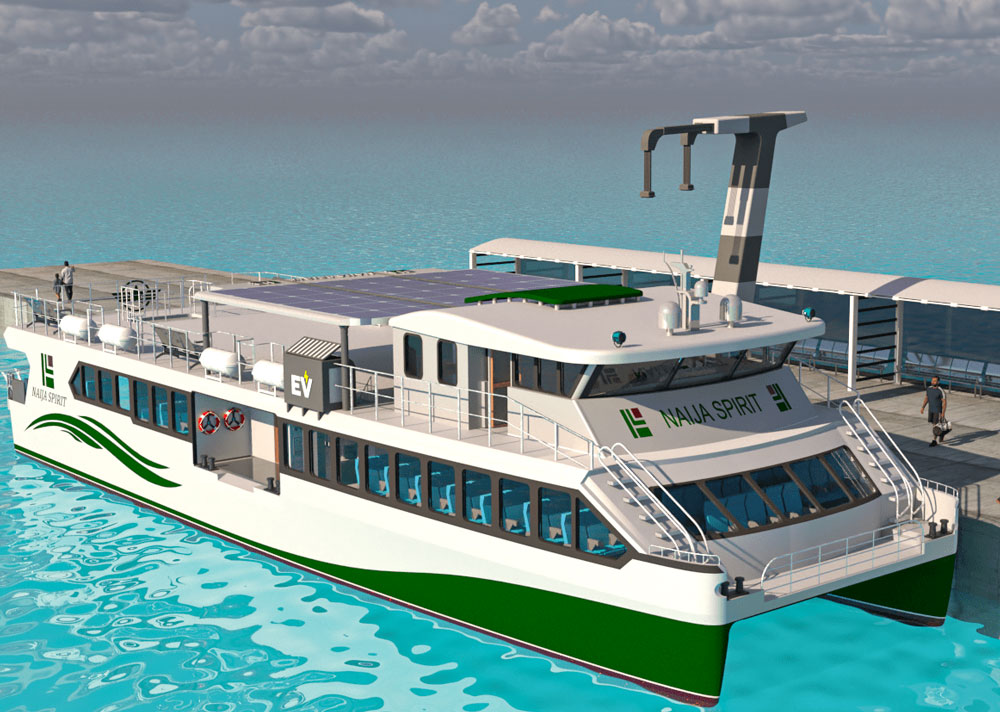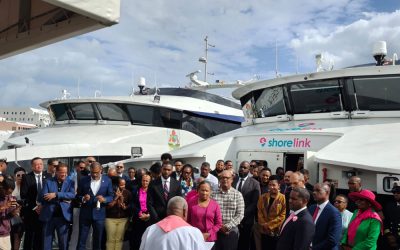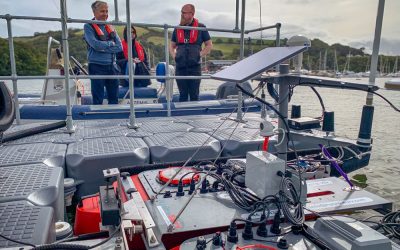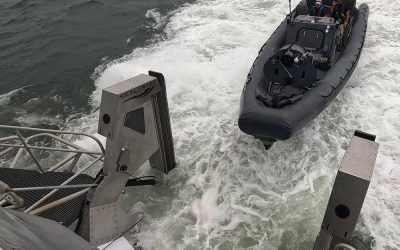This year, the Worldwide Ferry Safety Association (WFSA) concluded its 12th International Maritime Student Design Competition, an annual initiative hosted to encourage students to create designs for safe, stable and affordable domestic ferries – and particularly for rivers and regions within developing countries, or which are prone to higher-than-average rates of accidents.
Last year, the contest called for a design for a ro-pax ferry for the River Niger in Nigeria, which was won by Team Nawasena from ITS, Indonesia. The Nigerian Inland Water Authority, which regulates some 3,000 waterways, has been working to combat an unacceptably high death toll – with 1,000 fatalities attributed to domestic ferry accidents in 2023 – within this network.
The 12th WFSA student design contest saw the association return to Nigeria, with David Okafor, a naval architect with the Nigerian Navy, again assisting in drawing up the specifications for the design teams. This year’s challenge called for a 200-pax electric ferry capable of navigating Lagos’ waterways, emphasising a 25km route linking Ikorodu, a northeastern business zone, to the CMS transport hub on Lagos Island. The student teams had to factor in constraints such as low-clearance bridges, shallow docking depths (2.5m is common, Okafor advised) and water hyacinths, the latter of which can block ferry channels and jetties and cause damage to boat propellers and engines.
This year’s winning entry was Naija Spirit, a 28m, double-deck aluminium catamaran, designed by Team Black Pearl of the Bangladesh University of Engineering and Technology (BUET). Team Black Pearl was captained by final-year student Md. Safayet Hossain Shishir – who, incidentally, was part of the BUET team that secured second-place in last year’s WFSA River Niger design competition.
Shishir tells The Naval Architect: “This edition of the competition allowed roughly three months to complete the entire project, which included everything from initial studies and literature reviews to developing preliminary plans, performing calculations, making critical design decisions and executing the final design. We overcame this challenge through effective coordination within the team, clearly assigning tasks with specific deadlines and managing our resources efficiently.”
Being based in Bangladesh made it difficult to obtain a comprehensive overview of Lagos’ riverine conditions. “To address this, we conducted extensive online research and gathered relevant information to ensure our design would be suitable for the region and aligned with international standards,” he says. “For instance, we paid special attention to ensuring the ferry’s speed would be competitive with local road transportation. To estimate road travel times accurately, we performed a detailed traffic analysis, using Google Maps over an entire day.”
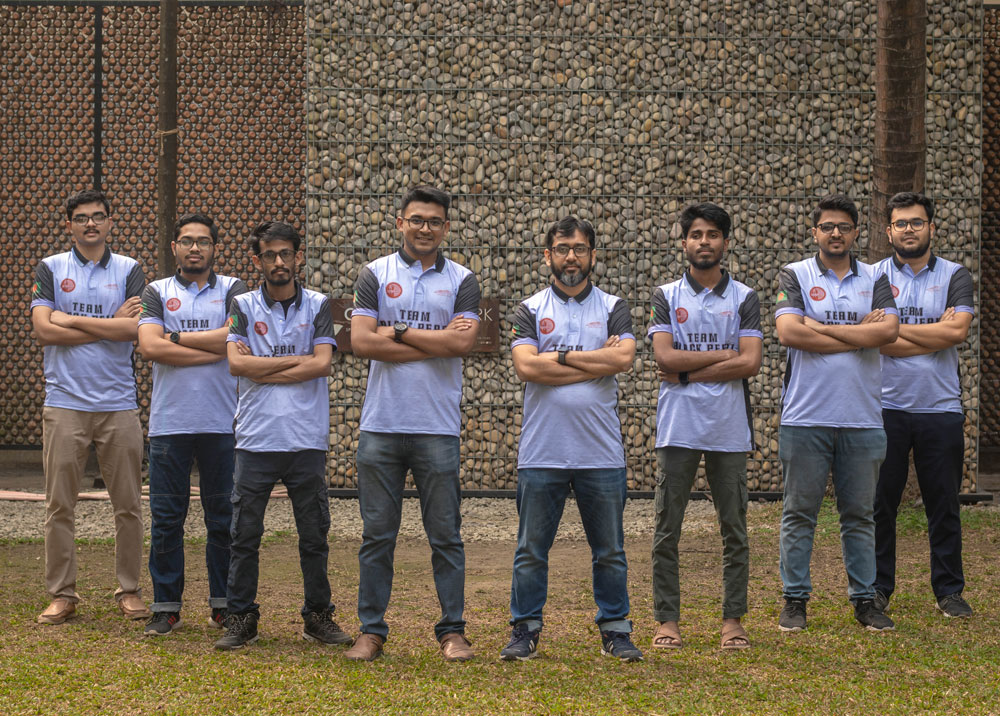
Team Black Pearl, from Bangladesh University of Engineering and Technology (BUET), winners of the 12th WFSA International Maritime Student Design Competition
One of the most critical challenges, though, Shishir highlights, was the design of the vessel’s electric battery pack. “It had to provide sufficient capacity for a complete round trip, while remaining as lightweight as possible to maintain vessel efficiency,” he says. “Another major focus was ensuring the ferry offered a clear travel time advantage over road transportation. This required identifying the optimal operating speed, minimising hydrodynamic resistance and targeting a one-way travel time of around 40 minutes.
“Additionally, balancing charging time with battery weight posed a significant engineering challenge. Achieving the right trade-off was essential to ensure efficient turnaround, sustained performance and overall operational viability.”
Naija Spirit would utilise an integrated electric propulsion system, comprising: two marine-grade, permanent magnet electric motors, rated 680kW at 1,200rpm apiece; a 584kW thruster with retractable, tiltable propellers; Sinus Penta 0457-series variable frequency drive inverters, with operating power bands spanning 1.3kW to 3,000kW; and switchboards provided by Stadt.
The set-up would also incorporate a hydrogen fuel cell system, to serve as an emergency power source while avoiding greenhouse gas (GHG) emissions. Shishir explains: “In the event of a failure in the main propulsion system, the ferry will rely on the hydrogen fuel cell to maintain a speed of up to 14knots, ensuring it can safely reach the nearest terminal.”
For Naija Spirit, the team chose two 1tonne Ballard hydrogen fuel cells, placed under the main deck at the demi hull. These would be paired with four Mahytec RGV500 hydrogen tanks, each with a 6.5kg capacity and weighing 0.185tonnes. Shishir adds: “Weight has always been a critical challenge…the main issue was finding a hydrogen fuel cell with a suitable height to fit within the under-deck space.”
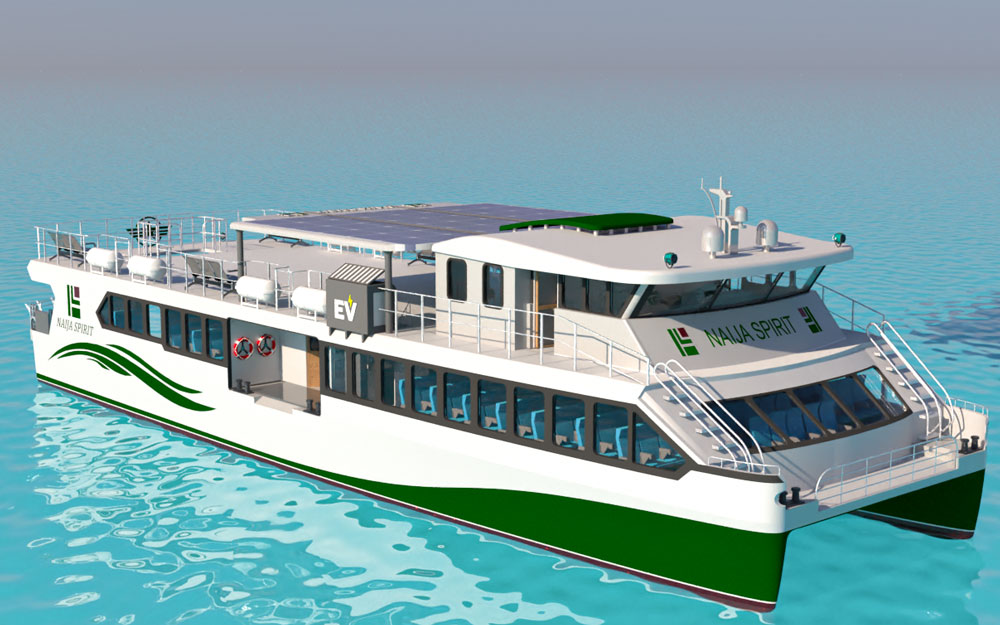
The 200-pax ferry is designed to complete up to 10 trips within a 12-hour operating window
Team Black Pearl also calculated that 168 battery modules would be required, constituting a combined weight of 14.66tonnes. EST-Floattech’s NMA-certified Octopus-branded batteries were selected. Shishir says: “The battery room is situated on the under deck.” Due to the battery pack’s weight, the room was “positioned around the midship, to ensure vessel stability,” he explains, adding: “The battery spaces are isolated using watertight bulkheads, and designated in compartments in both demi hulls symmetrically, also maintaining structural integrity.”
With the above propulsive arrangement, the team calculated that Naija Spirit would be capable of operating at a maximum speed of 20knots. “It can complete two trips – Ikorodu to CMS and back – covering 50km before requiring a recharge,” Shishir says. “The ferry can complete up to 10 trips within the 12-hour operating window, from 6am to 6pm, covering approximately 250km in total.”
Other clean energy features include a 55m2 spread of Solbian flexible solar panels, mounted on the roof and at points around the ferry. Each panel is rated 0.216kW, Shishir says, adding: “Assuming six hours of effective sunshine, the panels can generate a total of 71.28kWh – enough energy to power the ferry’s hotel loads on that day.” An additional 154kW of power would be generated by an underwater hydrokinetic turbine “with a diameter equal to the ferry’s draught, placed at the region of maximum flow velocity, identified by CFD analysis”, Shishir adds.
For the full, in-depth story, see the June 2025 issue of The Naval Architect
